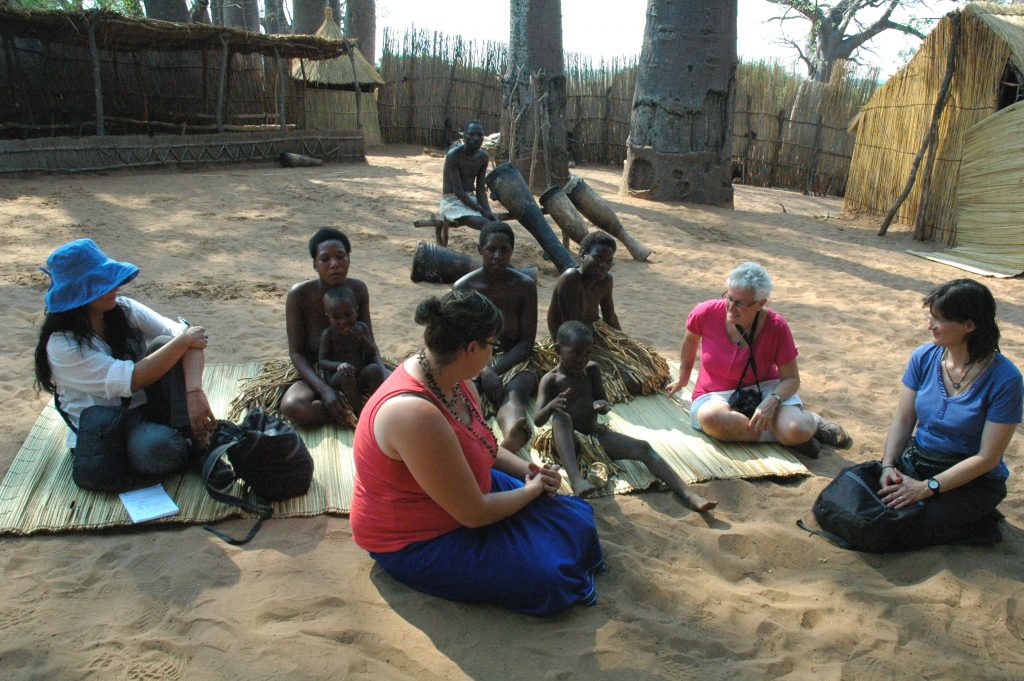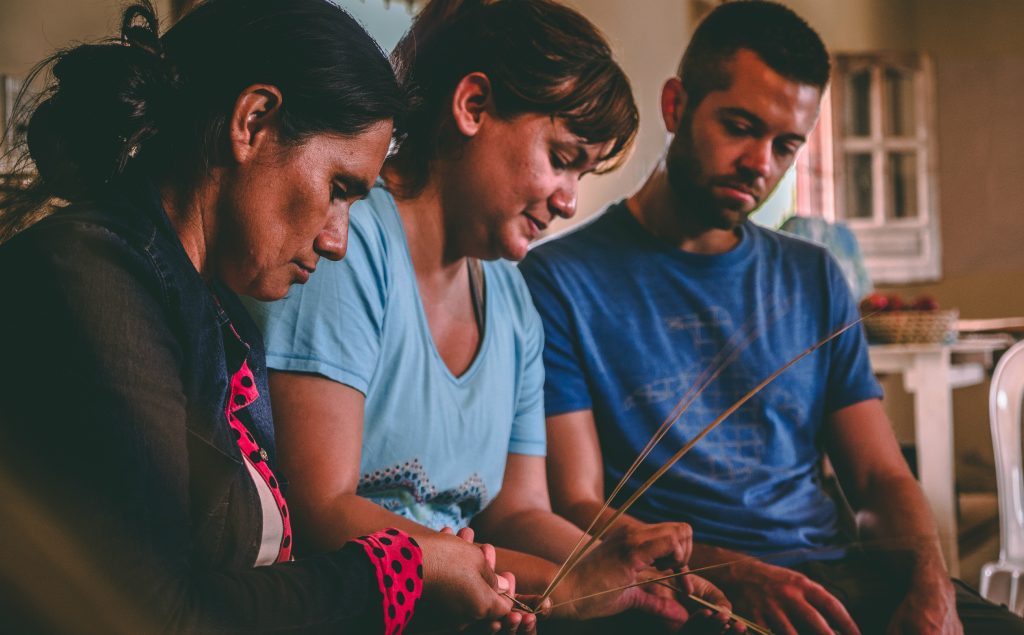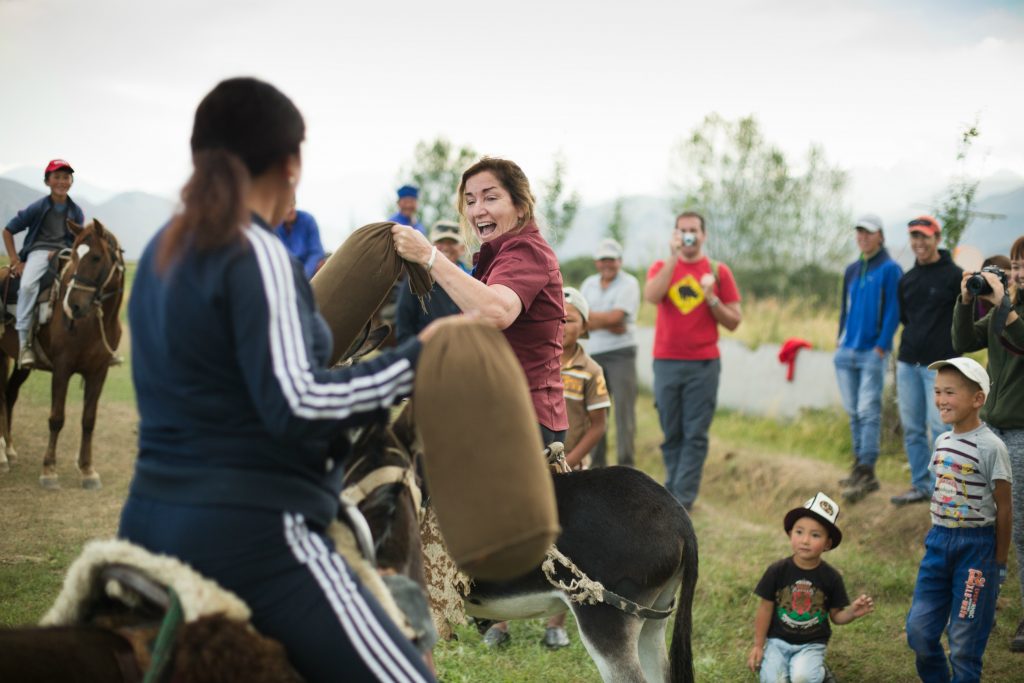Jamie Sweeting has an exhaustive history working with sustainability efforts within the travel and tourism industry. For more than 25 years, he has served on boards and in leadership positions developing social and environmental strategies and solutions that have helped guide companies hoping to do right as they lead travelers around the globe. Sweeting is currently president of the Planeterra Foundation, which works with several sustainable, community-based projects in dozens of countries. Additionally, he is the vice president for social enterprise and sustainability at G Adventures. In this position, he has been instrumental in the creation of Indigenous People and the Travel Industry: Global Good Practice Guidelines, a set of guidelines designed to help tour operators develop and operate experiences with Indigenous people in an ethical and respectful manner.
Shannon Stowell, CEO of the Adventure Travel Travel Association (ATTA), recently spoke to Sweeting about the development and use of the guidelines, which were released in late 2017.

Stowell: What made you (and G Adventures) decide to create the global good practice guidelines for Indigenous tourism?
Sweeting: Indigenous people and their cultures have been a passion of mine since before my travel bug hit in my late teens. I have been very blessed to have visited and worked with dozens of Indigenous communities over the years, and I have seen first-hand the plethora of challenges many communities face. This ranges from continued persecution to trying to navigate how to maintain their customs and traditions while at the same time adjusting to the rapid pace of change in the 21st century.
Bruce Poon Tip, the founder of G Adventures and chairman of Planeterra, and I were discussing the broad subject of responsible travel. We agreed that, while progress has been made in the past 20 years, there is still much to be done, and in some areas we still needed a better understanding of what it actually means to be responsible. G Adventures has the honor and privilege of taking our travelers to enjoy 94 Indigenous community tourism experiences in more than 40 countries. As such, we understand we have a tremendous responsibility to ensure the travelers we take to those communities and associated business relationships are beneficial.
Stowell: In brief, what is the purpose of these guidelines?
Sweeting: Given the above, we asked ourselves “What does it mean to be a responsible travel company when working with and visiting Indigenous communities?” The guidelines are the first important step in answering this simple question. We believe if the guidelines are followed, then travel companies know they are acting responsibly and Indigenous communities are assured they are being respected and treated fairly, and that their ancestral rights, history, and cultural assets are being maintained.
Tourism, when done well, has a tremendous ability to provide positive opportunities for community development. Unfortunately, it is often done poorly, even if unintentionally, resulting in negative community impacts. If all travel companies working with Indigenous communities followed these guidelines we would see a marked increase in the benefits tourism brings to these communities.
Stowell: What was the process you went through to create them?
The Indigenous People and the Travel Industry: Global Good Practice Guidelines outline 18 guidelines with clarified key actions for operators. Suggestions specifically address issues related to:
- Relationship creation
- Engagement
- Business agreement
- Monitoring
- Interpretation
- Employment and growth
- Visitor education
- Marketing
Sweeting: We knew that between Planeterra and G Adventures we had a significant amount of experience working with Indigenous communities to develop tourism experiences. We also knew we needed assistance in putting these guidelines together, so we contacted the International Institute of Tourism Studies at George Washington University (GW).
Seleni Matus, the director of the Institute, is an old friend and colleague, and I knew both GW and Seleni had extensive experience and expertise in the areas of tourism and Indigenous people. Working with an academic partner such as GW gave us the ability to undertake comprehensive desk research to ensure a) there were not already guidelines out there we could use, and b) if not, what good resources were available to use to begin to compile guidelines applicable to our business as well as other travel companies.
Over the course of a year, we:
- Reviewed literature and existing declarations and codes established by Indigenous communities, associations, and NGOs.
- Conducted primary research with Indigenous tourism suppliers and travelers.
- Developed guiding principles for respectful business practices.
- Established a set of guidelines with corresponding concrete actions.
- Engaged an expert review panel of Indigenous tourism experts and tour operation professionals to provide feedback on draft guidelines.
- Incorporated feedback to produce the final guidelines.
Stowell: That sounds pretty exhaustive! Did you run the draft guidelines by some of the Indigenous communities you had done primary research with to ensure they were still on track from their perspective?
Sweeting: We went back to the expert panel for a final review of the last draft.

Stowell: How do these guidelines differ from any other programs you're aware of?
Sweeting: There has been a lot of great work done to provide guidelines to Indigenous communities and Indigenous-owned tourism companies to help prepare them to be successful in the international tourism industry. Unfortunately, we could not find guidance for companies working with Indigenous people. We didn’t think it was right that it appeared the onus of “getting it right” was on Indigenous people. We believe that if your travel company has the honor of providing Indigenous community experiences to your travelers and you profit from that, then you have a moral obligation to strive to manage this relationship and experience as responsibly as you can.
Stowell: Agreed. Were there any big surprises in the process? If yes, what were they?
Sweeting: Perhaps the biggest surprise was that there hadn’t been more work done to get travel companies to take responsibility for being progressive in this area. When G Adventures decided we wanted to formalize our various commitments related to animal welfare in a comprehensive policy and follow a set of global guidelines, we were very fortunate to be able to build from the fabulous work undertaken by the Association of British Travel Agents (ABTA) and the Born Free Foundation.
Unfortunately, when it came to the area of tourism and Indigenous people, we realized we would need to lead the effort in collaboration with GW to fill this void.
Stowell: What do you hope will be the outcome for G Adventures and its supply chain?
Sweeting: We hope these guidelines will help us develop systems to ensure we as a company, and all of our contracted suppliers, are acting responsibly when it comes to working with Indigenous communities. We hope following the guidelines will allow us to develop and grow our relationships with Indigenous communities. We also hope they will continue to trust we are a company committed to ensuring that taking people to their communities will be beneficial to the community, travelers, and G Adventures.
Stowell: Is anyone free to use and modify the guidelines for their own destinations and situations?
Sweeting: Yes, most definitely. We very much encourage all travel companies and destinations engaged in tourism with Indigenous communities to utilize the guidelines. We only ask that, as you use them, you document what works and what doesn’t and provide us with feedback on how they can be improved moving forward. We see this process as very much being a journey rather than a destination. We’re certainly committed to continual improvement in this area and hope that we will get better and better the more we learn and develop.
Stowell: Have you received any pushback on the guidelines?
Sweeting: Not yet. At least not directly to G Adventures, Planeterra, or GW that I am aware of. That said, we know these guidelines are far from perfect and will work better in some situations than others. I very much hope we will get constructive feedback from people who found them to be lacking, so they can be improved moving forward.

Stowell: I think it's fair to say the concept of Indigenous tourism is a complicated situation. Not all Indigenous groups want to be involved in tourism, and, in some communities, there are some people who do want it and others who don't. What do you recommend in this situation?
Sweeting: That is a very fair statement, and I think it applies to all tourism in communities and not just Indigenous communities. Each community has its own way of managing decision-making and conflict. Personally, I do not think it is the role of a travel company to decide whether or not tourism should be allowed in a particular community. That is up to the people of that community.
The best examples I have found are when communities take the step of actively making decisions in this area rather than just letting things happen and then trying to deal with problems later. Responsible travel companies can make themselves available to communities to assist in this process when appropriate and requested, but should also be up front in being transparent with regard to any conflict of interest or biases they might have. As outlined in the guidelines, if things get to this stage, it’s often recommended to look for an independent nonprofit organization with expertise in tourism and community development to assist in managing these situations.
Stowell: It is inspiring to hear this sensitivity is a guiding force in the process for you. Do you have any further thoughts you’d like to share?
Sweeting: I would like to invite all ATTA members interested in this subject area to download the guidelines and consider integrating them into their business processes. And if you do integrate them, please contact me through LinkedIn and let me know. As we start to recruit companies to use the guidelines, we’ll work with GW to come up with a way to solicit and record feedback we can then use for revision of the guidelines.
Stowell: Thank you, Jamie, for being candid, showing leadership, and allowing anyone in the industry to benefit from the hard work you, Seleni Matus, and your teams have done! Hopefully, this will help spur more responsible behavior worldwide.
